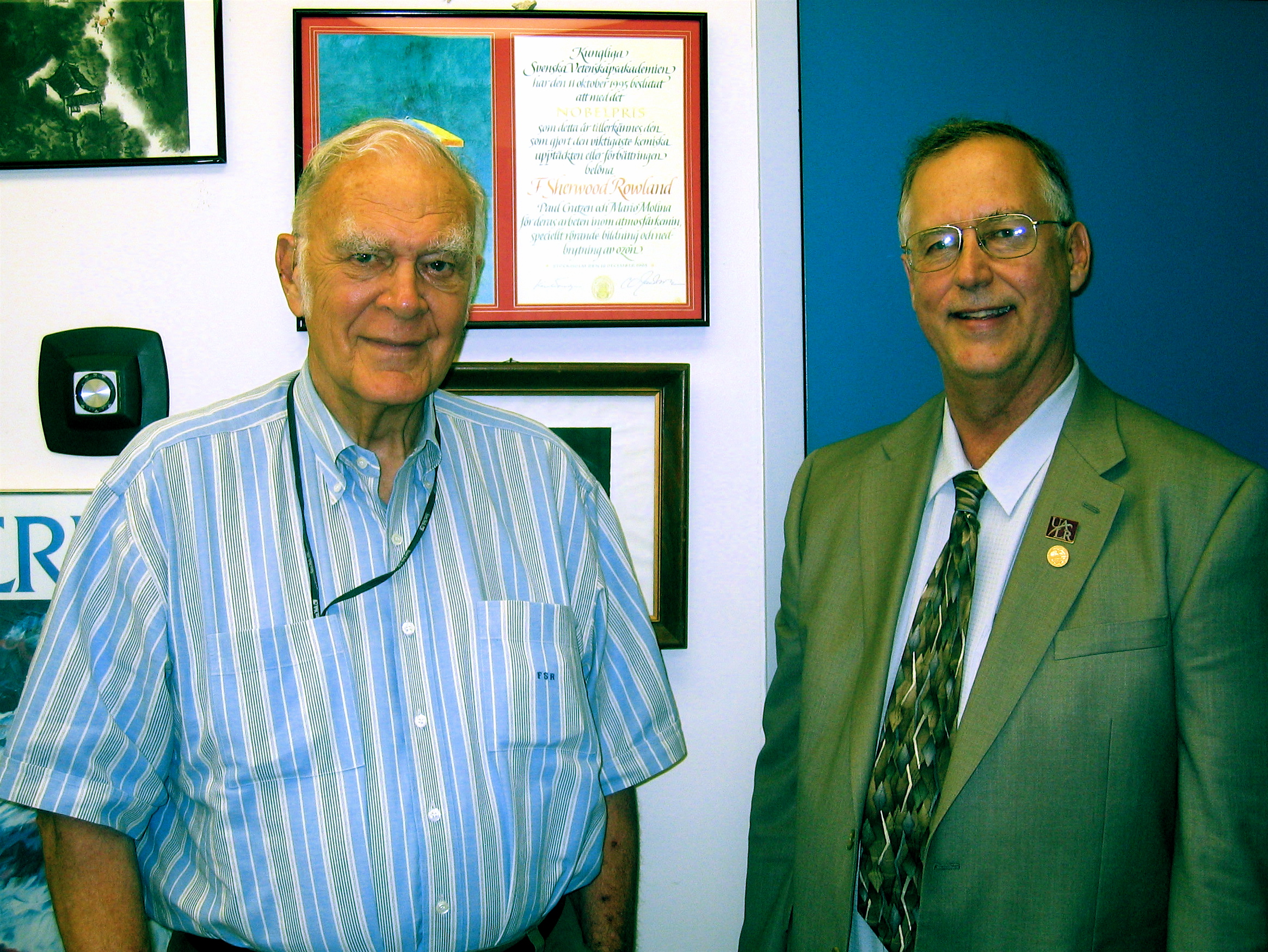Chemistry chair points to need for baselines in climate change research
A milestone was reached last Friday as scientists determined that concentrations of carbon dioxide nudged up to 400 parts per million.
But CO2 is not the only gas needing baseline measurements, according to Dr. Jeffrey S. Gaffney, chair of the chemistry department at the University of Arkansas at Little Rock. Gaffney is internationally respected for his research in environmental and atmospheric chemistry.
“We know that there are higher ethene levels over certain regions, including the southeastern United States, and are likely to occur in the future,” Gaffney said. “What we don’t know is the impact on ecosystems and agriculture, or even humans. Baseline measurements are key.”
Gaffney’s emphasis on the need for baseline measurements was the topic of his recent keynote address at an Arkansas Academy of Science Meeting.
Although he has been advocating it for years, Gaffney said the need for such data in climate change research is greater than ever. Gaffney frequently points to the role of atmospheric ethene as a case in point.
The gas is emitted from biofuels such as ethanol and other sources, including wildfires. Gaffney said wildfires are expected to increase significantly with climate change because of earlier springs and longer growing seasons, with droughts anticipated to increase in the summer months, especially in the western and midwestern United States, according to most climate models.
And while it is well known that ethanol’s combustion as a biofuel leads to enhanced emissions of certain gases, including ethene and methane, little attention has been given to what the gases’ impact will be in the long term, especially with the potential for increases from wildfire events, according to Gaffney.
To put it another way, while some think higher ethene levels are devoid of lasting negative impacts, it has yet to be confirmed as fact, says Gaffney.
The use of motor vehicle ethanol (E10) has risen and is expected to increase further with the move towards the use of higher level ethanol content. In addition, agriculture and controlled burns, as well as wildfires, will likely increase current and future levels of ethene, he said.
Ethene is a potent plant growth hormone and could impact crop yields. Most see its effects as a fruit ripening agent in local grocery stores as it is used to rapidly take green bananas to the ripe yellow ones.
It is also the topic of a paper (Atmospheric Environment, 56, 161-168, 2012) that was dedicated to Nobel Prize-winning chemist F. Sherwood Rowland, whose work on ozone depletion made him a voice for scientists – Gaffney included – who shared his concerns about climate change and global air quality with an ever-increasing human population.
“That paper was based on data that Dr. Don Blake and Dr. Rowland took in 2002 over a number of states, including Arkansas, during a period before ethanol/gasoline blends were mandated and when there were no wildfires,” said Gaffney.
Examination of the data indicated ethene was only a tenth of a part per billion in desert regions; however, in forested regions such as in rural Arkansas data indicated about three-tenths of a part per billion.
“So any increases over that level are likely to have an impact,” Gaffney said. “We know that fire plumes and ethanol/gasoline blends will likely be hundreds of times higher than that, but we have not been continually taking measurements to see what is happening as we have more fires or burn more biofuels in our cars.”
And it is not just ethene, according to Gaffney, but many other gases and aerosols that scientists should be following that impact the climate, as well as air quality, especially formaldehyde and other aldehydes, black carbonaceous aerosols, and ozone, in addition to the carbon dioxide most frequently talked about.
Gaffney interviewed Rowland in 2007 for the American Meteorological Society – Oral History Project (1983-2009). Rowland died in March 2012.
